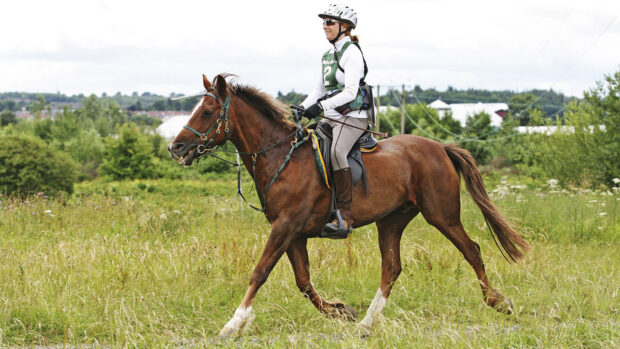In many equine sports, it can be possible to get away without dotting all the i’s and crossing all the t’s in preparing the horse, but there is nowhere to hide at the top of endurance racing.
When exercising at the limit, nutrition is one of the fundamentals of performance, from the overall forage to concentrate ratio down to the details of electrolyte balance.
The speeds at which elite endurance horses travel when racing mean that their muscles work aerobically most of the time during a ride. It’s only when tackling steep hills or in the sprint to the line that they go anaerobic.
Muscles are most efficient when working aerobically, and to do this a horse can “burn” either fat (lipid) or glycogen. The dietary source of the lipids is either volatile fatty acids from the digestion of fibre or the oil supplied in the diet.
Fibre is probably the most important nutrient (after water) for the equine endurance athlete. The digestion of fibre takes place slowly, so the energy it releases is produced more evenly, and long after the end of the meal. This means you get more “miles per gallon”. Additionally, fibre seems to bind water as it passes through the gut, acting as a fluid and electrolyte reservoir.
Notwithstanding poor training, the onset of fatigue can be affected by nutrition. Fatigue is measured not only by time, but at the vet checks during a race. If the horse’s heart rate exceeds 64bpm after 2min you are out.
Depletion of muscle glycogen stores, combined with insufficient dietary fibre, is one of the main sources of fatigue, but so is dehydration. Fluids and electrolytes are lost in sweat and, if not replenished, affect performance markedly.
Top tips
- While the laws of physics dictate that the power to weight ratio (max power/min weight) will mean faster speeds, the reserves an endurance horse calls upon mean that it can’t be unduly thin
- Energy should come predominately from fibre and oil: fibre from forage and alfalfa, but also compounds containing soya hulls and sugar beet pulp. Typically, hard feeds with 6-10% oil are used, but huge excesses will make the horse fat, and can affect fibre digestion. (Don’t cut out starch altogether. The horse needs some in the diet to maintain muscle glycogen levels, necessary for the “power” work of going up hills or galloping.)
- Water and electrolytes are crucial throughout and after a ride.
- If you go slowly on endurance rides, you just need forage and low-energy feeds — horses have evolved to cover long distances like this. It’s only when going at speed that the extra feed counts.
This feature was first published in Horse & Hound magazine (15 July, 2004).




